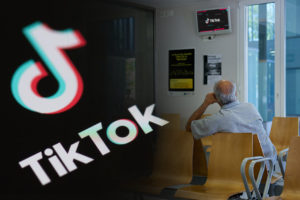As leaders, we should be able to make the following series of statements with confidence:
- I know who my best people are, and we have plans in place to keep them engaged while ensuring their continued growth.
- I’m delighted with our talent brand and ability to attract the best people.
- I’m proud of how we hire and onboard people into our business, maintain high retention, and enable our employees to do their best work.
Even if you would have agreed with all those statements before the pandemic, I’ll bet you’re far less confident about them now. The past 18 months have shifted the way all workers think about their professional lives. The true challenge is finding solutions that suit individuals, teams, and businesses as a whole. Atlassian’s “Reworking Work” study offers some clues.
We surveyed more than 6,000 workers around the world to find out how they’re feeling and what they expect from the future of work. Having done the same research a year earlier, this year’s findings offer valuable insight into how attitudes have changed and what’s driving the shift.
Employee expectations have changed. Are you ready to make the shift to meet them?
FLEXIBILITY IS A TOP PRIORITY
If you’ve read even a few of the stories related to the Great Resignation, you’ve probably picked up on a key theme: the disconnect between what employees want and what employers are providing.
The bottom line is that flexibility is essential if you want to hang on to your best people and continue attracting top talent. Over three-quarters of our respondents (78%) told us they want to keep the flexible working arrangements and have the option to work remotely. This echoes research Atlassian conducted in partnership with PwC earlier this year, which found that over 40% of knowledge workers in the U.S. are willing to switch employers if it means they’ll have the option to work from home.
Some companies have caught on to this trend and are using it to their advantage. They’re offering some degree of flexibility to employees from Day 1. Not flexibility that’s restricted to certain levels of seniority or tenure, nor at your manager’s discretion; just the option to work from the office or from home, or some combination of both. As Arvind Krishna, the CEO of IBM recently mused, “Why should I, as an employer, care as long as you can get the work done and you’re highly productive? I should not try to be overly dictatorial about that.”
HIRE EMPLOYEES WHO SHARE YOUR VALUES
We also have to understand that, as leaders, our actions are being watched more closely: 49% of employees would quit their jobs if it became clear their employer’s values did not align with their own. And in the current labor market, employees have the upper hand.
The upshot is that taking values alignment into consideration during the hiring process is a must. How can you lead teams through major changes like digital transformation or a pivot in company strategy without triggering a wave of attrition? By building teams who share the same fundamental attitudes about work. How do you know you’re building the most effective teams regardless of members’ backgrounds, location, or personality? Again: shared values.
That’s why a values interview is one of the most important elements of a hiring process. These interviews involve a set of structured behavioral questions designed to assess how a candidate’s mindset aligns with your core values. And the person conducting the interview usually comes from outside the department doing the hiring. That’s on purpose. The more we can make the values interview about the candidate’s mindset (and less about their skill set), the better.
OPTIMIZE YOUR ONBOARDING PROCESS FOR REMOTE WORKERS
Leveling up your onboarding game is critical, especially in cases where teams are in remote-only or hybrid mode. Atlassian learned this firsthand: Half of our 7,000+ employees joined the company during the pandemic. That’s over 3,500 Atlassians who have never been into one of our corporate offices or met their teams face-to-face. So we adapted our processes with distributed teams in mind and developed a 90-day plan for onboarding new hires that is optimized for remote workers.
TRY, LEARN, ADAPT, REPEAT
Despite the obvious difficulties of distributed working, most people value flexibility so much that they’re committed to working through the challenges. As leaders, our job is to evolve how we work so we can ensure an engaged workforce and an adaptable, sustainable business.
Enabling distributed teams is about embracing mass personalization and letting people step up to take control of their workweek. It’s also about keeping our promises because talking about flexibility, but then putting policies in place to restrict it, does more harm than good.
We’ve all survived the past 18 months, but it’s time to set our sights higher than that. Nobody has all the answers, so let’s experiment with new ways of working and coach our teams through these changing times. This means less emphasis on managing tasks and more on managing people—less talking and more listening, and maintaining a focus on mental health and well-being.
It’s clear organizations who set teams and individuals up for success in the new world of distributed working are most likely to succeed. If we help them thrive, the whole organization will thrive, too.
For full article, click here.
Our work is always to Earn Trust, Build Reputation, Widen Influence to grow your brand and business.






